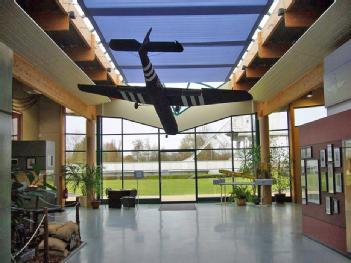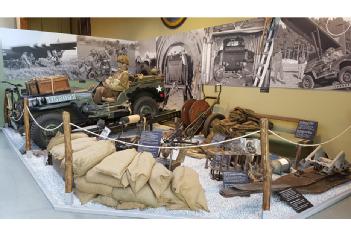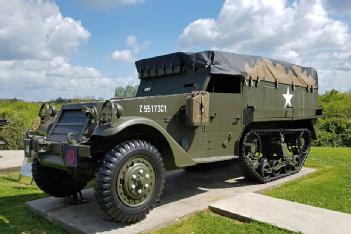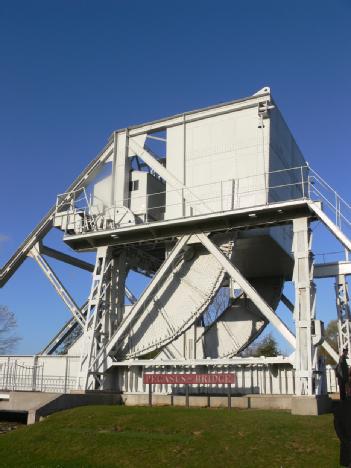
  |
Memorial Pegasus |
14860 Ranville, France (Normandie) |
|
| Address |
1 Avenue du Major Howard
|
| Floor area | unfortunately not known yet |
Military Museum in general
- Bridges and Tunnels
- Armored vehicles
- Military Aerospace
- Arms
- Amateur Radio / Military & Industry Radio
|
Opening times
|
February – March: 10.00 - 17.00; April – September: 9.30 - 18.30; October – 15th December: 10.00 - 17.00 février - mars: 10h00 - 17h00; avril - septembre: 9h30 - 18h30;
octobre - 15 décembre: 10h00 - 17h00 |
||||
|
Status from 05/2023
|
Adults: 8,90 €; Children (8+), students: 5,50 € Adultes 8,90 €; Enfants (8+), étudiants: 5,50 € |
||||
| Contact |
|
||||
| Homepage | musee.memorial-pegasus.com | ||||
| Location / Directions |
Ranville is a commune in the Calvados department in the Normandy region in northwestern France. |
| Description | The Memorial Pegasus The division, commanded by Major General Richard Gale, was composed of parachutists and glider borne troops transported in Horsa or Hamilcar gliders. The principal mission of the division was to hold the eastern flank of the invasion forces in order to prevent German counter attacks coming from the east. The capture of the River Orne bridge at Ranville and the bridge across the Caen Canal at Bénouville is the most famous mission of the airborne division. 180 troops of the Ox and Bucks Light Infantry, commanded by Major John Howard, captured the bridges after landing in Horsa gliders only metres from their objectives. On June 26th 1944, the Caen Canal bridge was baptised Pegasus Bridge as a tribute to the British troops. Pegasus, the winged horse, was the emblem worn on the sleeves of the men of the airborne division. Replaced in 1994 by a new bridge the original Pegasus Bridge is now on display in the park of the museum. Bailey Bridge With the introduction, in 1940, of heavier armoured vehicles, such as the forty ton Churchill tank, a new type of bridge was required. The bridge had to meet three criteria; No heavy lifting equipment being required meant that the elements of the bridge could be lifted by hand. The heaviest piece of the bridge weighed 280 kilos enabling it to be carried by 6 men. No welding was involved in the construction. The bridge was assembled using bolts, clamps and steel pins. It was a full size Mecanno kit which had to fit into a truck. By December 1941, the first elements were coming off the construction line. 650 companies were involved in its manufacture. An original element of Bailey Bridge, installed in Normandy by the Allies in 1944 and used until 2000 is on display in the park of the museum. Sir Donald Bailey retired in 1966, living in Christchurch until his death in 1985. Horsa gliders In Normandy, 6th Airborne Division used more than three hundred Horsa gliders to transport the infantry and equipment. Each aircraft could carry 28 soldiers or a jeep and trailer or a Jeep and 6 pounder anti gun. Fully loaded a Horsa glider weighed almost 7 tons. A full size copy of a Horsa glider displayed in the park of the museum was constructed for 60th anniversary of D-Day in 2004. |
[dsp_museum_detail.cfm]
| Data Compliance | More Information |
 memorial-pegasus.org
memorial-pegasus.org 























